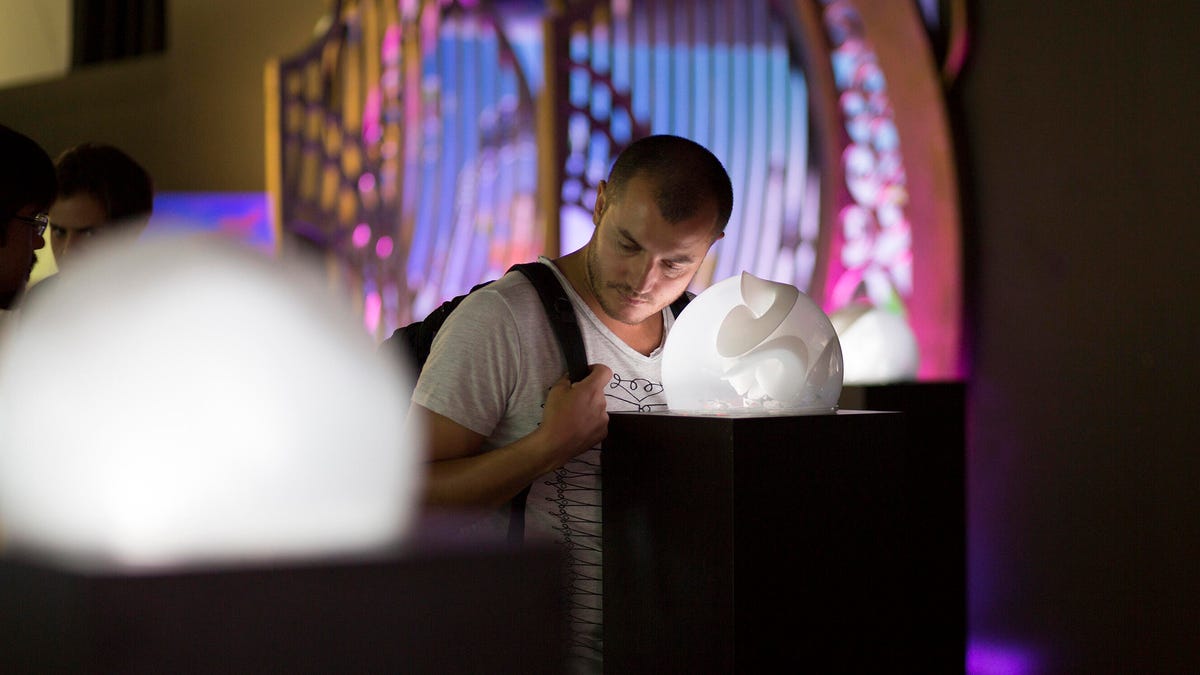AI-driven Cacophonic Choir amplifies voices of sexual assault survivors
The closer you get, the more clearly you can hear their stories.

From a distance, the voices are unintelligible. Approach the series of illuminated sculptural forms and you hear audio fragments emanating from the objects: "Started touching." "Afraid to say anything." "So angry." "Rapist lives in my neighborhood." Get even closer and disturbing full narratives of sexual assault emerge.
This is Cacophonic Choir, an AI-driven interactive sound installation aimed at amplifying the firsthand stories and voices of sexual assault survivors while addressing the ways their experiences can be distorted by mass media. From far away, the audio sounds like an indistinguishable jumble. Closer in, from about a foot away, the stories become more coherent and personal.
The installation, created by a computer scientist and an artist who both survived sexual assault, is made up of nine individual voices, each attached to a physical structure. The voices are generated by a machine-learning algorithm designed and trained on the anonymous stories of more than 500 sexual assault survivors. The stories were shared on the When You're Ready project website, where those who've weathered sexual violence tell about their experiences.
A virtual version of Cacophonic Choir will be on display in the online art gallery of annual computer graphics and interactive-techniques conference Siggraph, where it's been named the gallery's best in show for 2020. This year's event runs Aug. 17-28, and like most large gatherings, it'll be virtual due to the coronavirus pandemic.
"As survivors of sexual assault, we found the surge in media coverage of the #MeToo movement overwhelming," the creators say in an interview on the Siggraph blog. "We wanted to express the feeling of being inundated by these stories."
Hannah Wolfe, an assistant professor of computer science at Colby College, and Şölen Kiratli, an artist and architect, teamed with musician Alex Bundy for the project.
Cacophonic Choir combines real-time computing, proximity sensors and audio processing, as well as 3D printing for making the sculpted shapes that burst out of translucent spherical silicone membranes. But at its heart, the work's about humans.
"We find all of the stories to be unpleasant, but important to listen to and reflect on," the creators say. "The intention was that the sculptural forms and the sonic interactions would draw people in."

